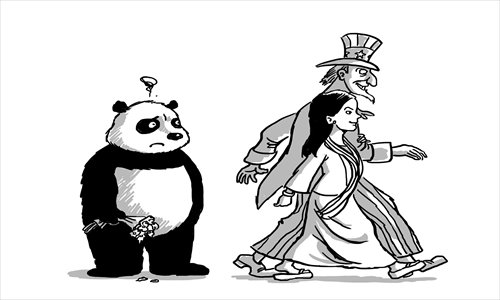China needs stronger role in Kachin conflict

Last Friday, some Kachin activists based in Thailand demonstrated in front of the Chinese and US consulates in Chiang Mai, calling for the two to help end the attack of the Myanmese government forces on the Kachin Independent Army (KIA).
Before that, the US embassy in Myanmar had expressed deep concern over the Kachin conflict in northern Myanmar. Myanmar's Ministry of Foreign Affairs issued a rebuke to the US embassy, which Myanmar thought was taking the side of the KIA.
The conflict is happening in northern Myanmar, close to the Chinese border. Shells have constantly fallen into Chinese territory.
The Kachin in Myanmar and the Jingpo in Yunnan Province are actually the same ethnic group. Therefore, China is also quite concerned about the conflict.
Although the US is situated far from Myanmar, it does not turn a blind eye to the conflict. Politically and economically, Myanmar is not far from the US, and sometimes even closer than to Beijing.
This could be seen in the Kachin activists' demand for the US to intervene. Even though the US is located far away, they still turned to the US for help, which has embarrassed their neighbor, China, whose role is increasing on the world stage.
The Kachin activists know that the US is still a hyper-power that can influence the region's political and economic situation.
Meanwhile, China has not played a full role in solving ethnic conflicts for Myanmar. Due to the restraint of China's own policies and its failure to achieve any conflict-solving victories for a long time, the US has gained more leverage in dealing with such conflicts.
The purpose of the US pivot to Asia is to balance China's rise. China faces the same question of how to balance the US influence in the region.
US political scientist Joseph Nye recently wrote in the New York Times that "America's rebalancing toward Asia should not be aggressive." In my eyes, China needs to be more aggressive, otherwise the situation won't be balanced at all.
So far China has not done enough in promoting a solution to the Kachin conflict. It has failed to take a pivotal role in setting and maintaining peace in the region. This has given the chance for the US to create regional tension by making use of past conflicts.
The impact of the Cold War in Southeast Asia is fading, but it still retains inertia. Not only does the US deal with regional affairs with a Cold War mentality at times, but also some Southeast Asian countries turn to the US for the sake of their own interests, a practice left by the Cold War.
To what extent China can balance the US in terms of dealing with regional affairs partly depends on how large a role it can play in solving internal problems within the region and easing regional tensions.
If the US influence in the region will not pose a threat to China's role, as China hopes, and the illusions of some about containing China are to be eliminated, China should face the problems such as the northern Myanmar conflict with a more positive attitude.
China can do this. But it faces two challenges. One is how it can effectively deal with conflicts like the one in Myanmar through peaceful means so as to stabilize the region as soon as possible. The other is how to handle its relationship with the US. The US still takes a leading role in Southeast Asia and the ideas it advocates can generate strong political influence in the region.
China should learn to enlarge its influence and not to have direct confrontation with the US even after the US influence has penetrated the region.
The more China can show its strength in issues of the development, stability and security in Southeast Asia, the more it feels confident to act on an equal footing with the US, and the more Asian countries can benefit from China's development.
The author is a senior editor with the People's Daily. He's now stationed in Bangkok. dinggang@globaltimes.com.cn